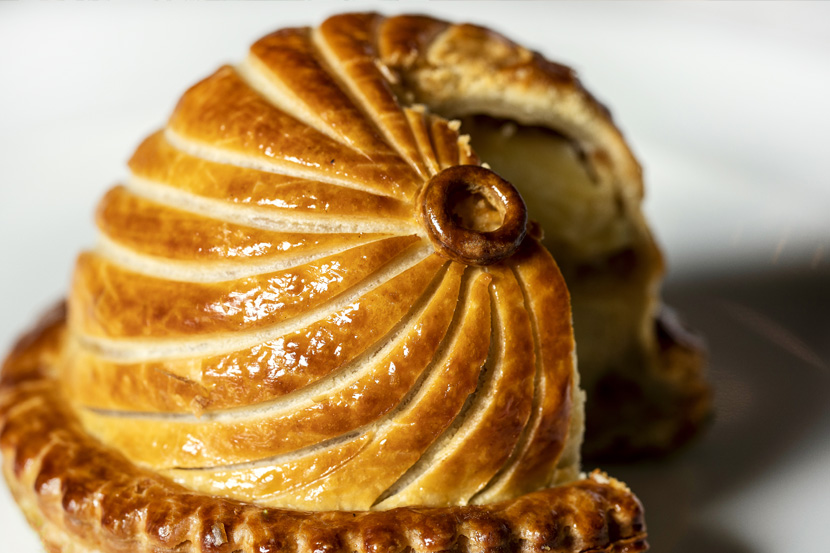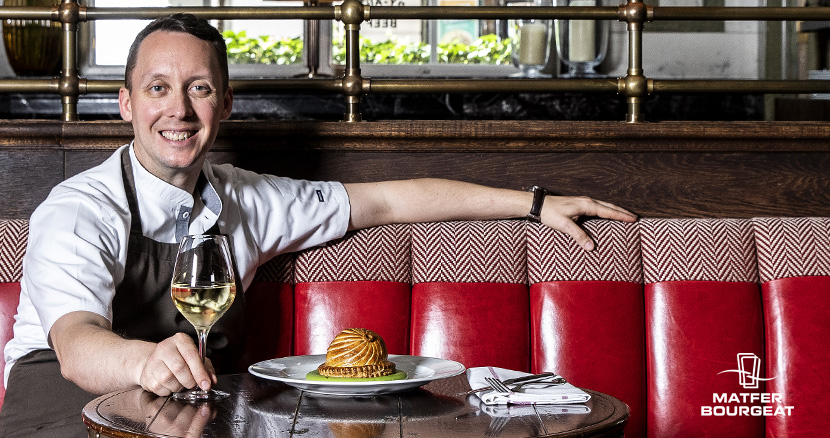Spotlight on… Calum Franklin, the unencrusted chef!
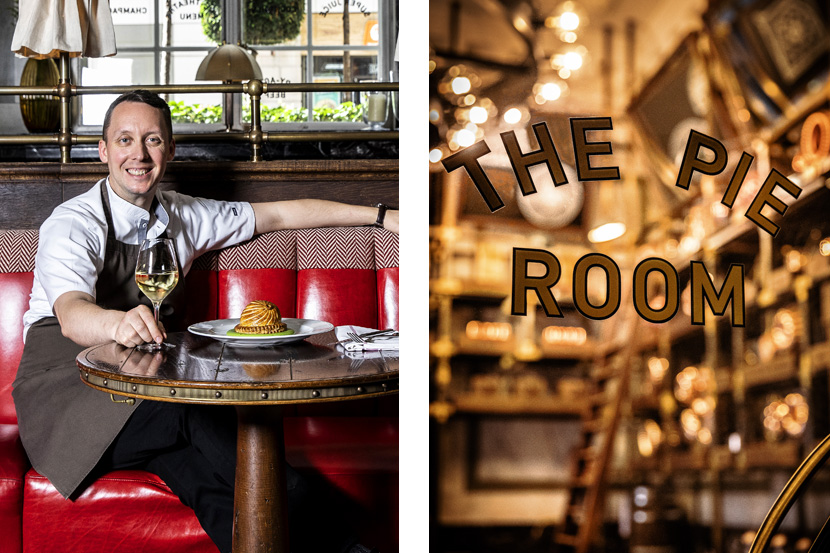
Prodigious master chef in the art of doughs, Calum Franklin scintillates at the helm of the invigorating cuisine at the Holborn Dining Room, located in one of London’s historic districts. A true work of art, his pâté en croûte, with delicious wild scents, unlike those found anywhere else, has imposed himself as one of the great chefs of his generation. We encountered this rising figure of bistronomy in his den – his Pie room – who maintains his rank without fitting in the mold…

says Calum Franklin, bending over his work in an ardent Prometheus manner with a smoldering gaze, as he chisels and refines his pâté en croûte, golden brown and perfectly cooked inside, about to reveal the fire of its delicate flavors. It must be said that at 35, this vigorous-figured chef already has his own ‘proven science of dough’ to the point of attaining the heights of English gastronomy. In London, no one can resist his masterpiece: the pie, or pâté en croûte, a typically French specialty.
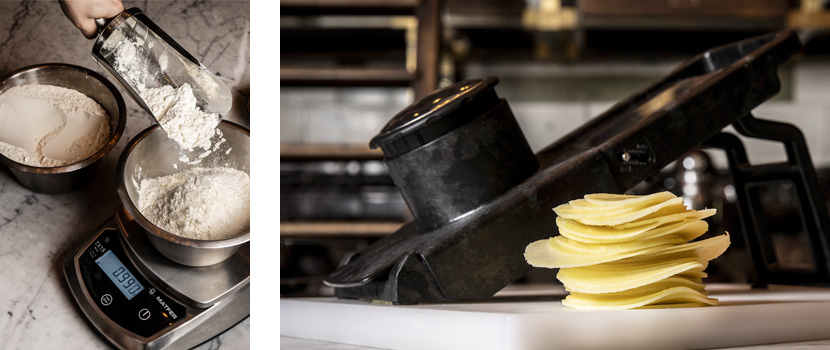
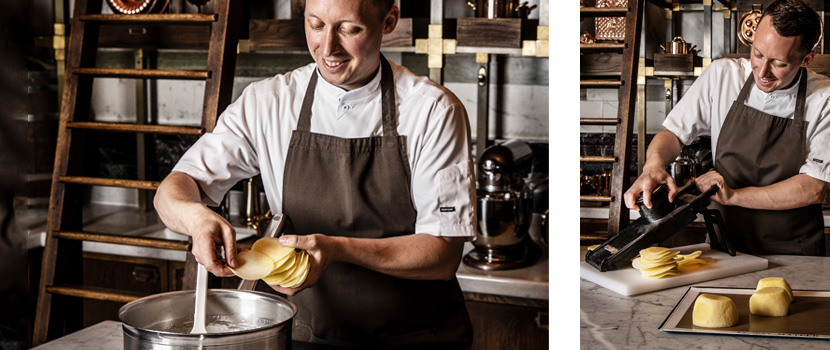
We went to meet this forerunner who has opened the way in cuisine to pies in all their forms, is adulated, and who claims to be a pastry “deviant” with an obsession for pie molds…
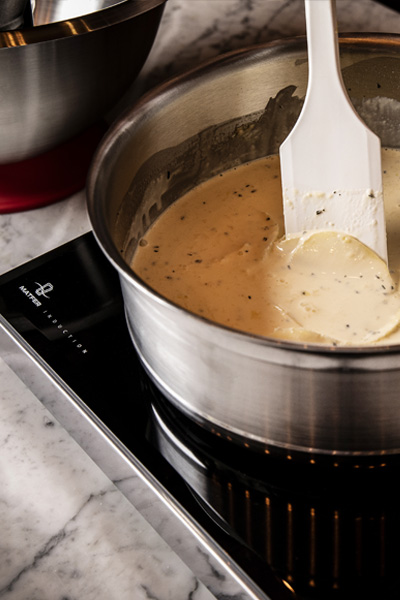
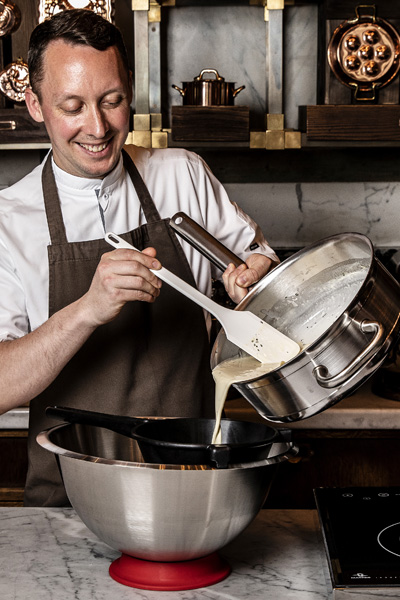
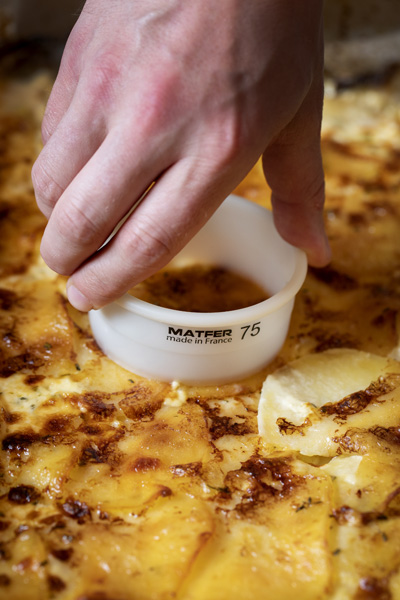
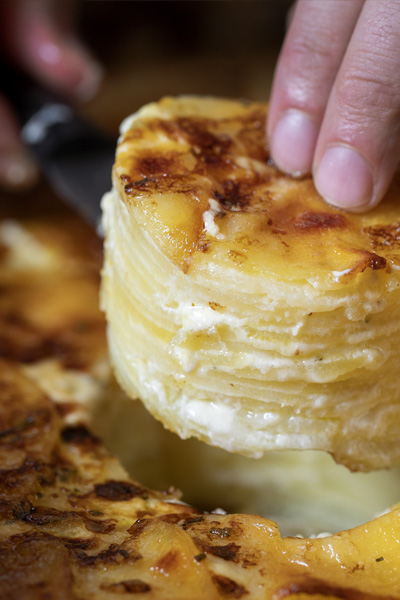
When did your vocation to be a chef commence?
I started working as a kitchen doorman at 16. I admired the chefs in the kitchen and quickly realized that was what I wanted to do. It was a great relief to find what I wanted to do at such a young age. Nobody showed me how to bake, but being in the kitchen, I observed and it really made me want to do it. Before that, I had never had such a magnetic attraction for a specific job. Pastry is something you have to physically learn and practice over and over again. Once you’ve learned it, it’s in your head, it’s ingrained.
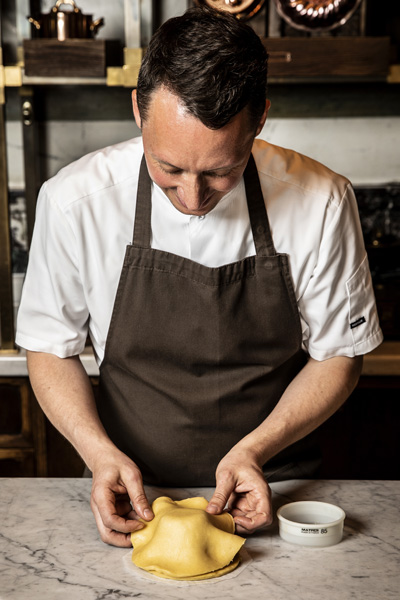
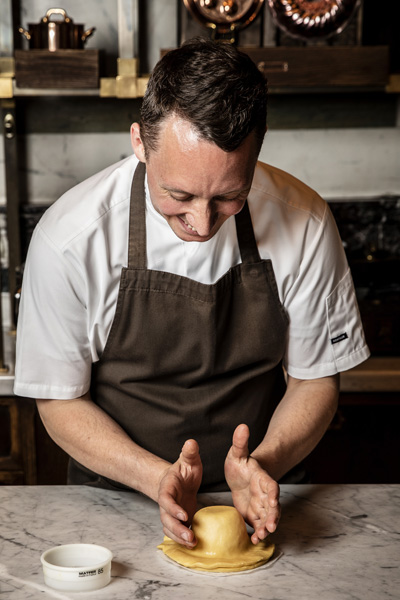
What inspires and nurtures your creations?
I am proud to live in London because it is a city that inspires my cuisine. It’s a modern, vibrant city-world, not only English, but also cosmopolitan and my cuisine is inspired by its design, architecture and history.
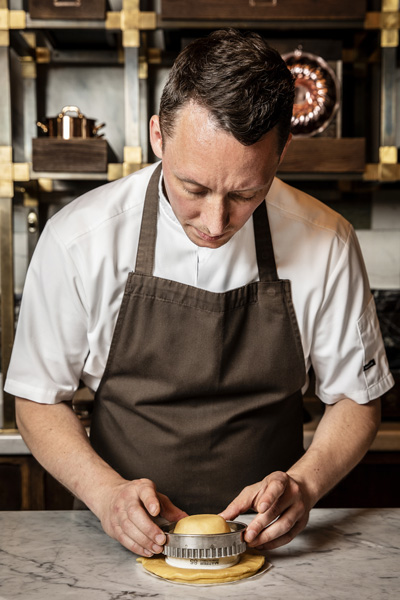
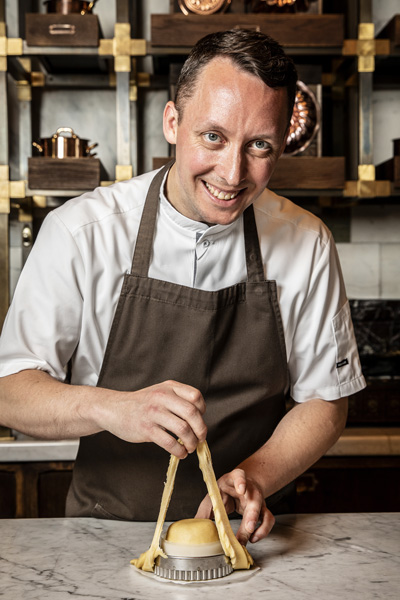
How would you describe your cuisine?
It is a celebration of English culinary products, particularly those inscribed in their history and of being able to project them contemporarily. I love transcending contemporaneity, bringing life back to the products of yesteryear. I have a passion for the culinary history of products but using modern means and tools available in our modern kitchens to develop new recipes.
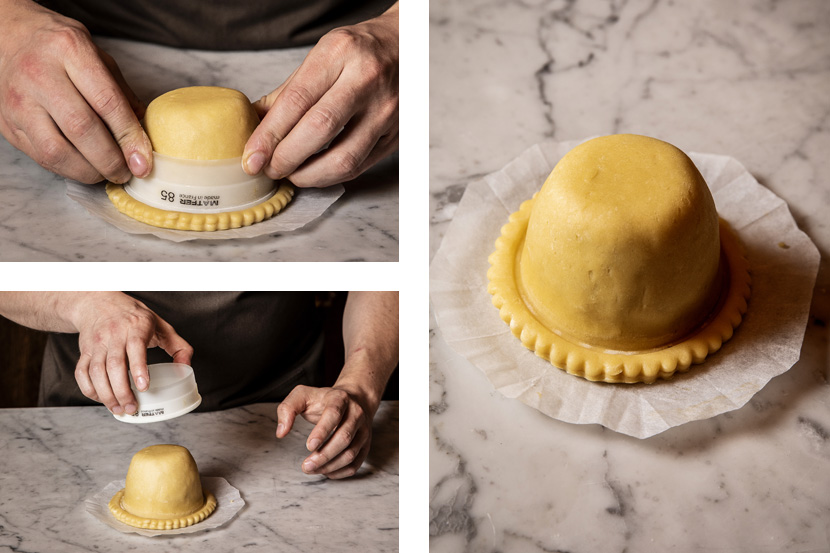
What is iconic about British cuisine today?
Anglo-Saxon gastronomy has been shaped by its climate, geography and history and it has absorbed many cultural influences. The English, throughout their history, brought back flavors that they adapted to the taste of their country. It is a gastronomy that has proven its merit over the years. Especially “pies”, pâtés en croûte are one of the pillars of English cuisine. These are rustic dishes filled with all sorts of ingredients and unendingly varied that are often found on family tables. In short, everything that cooks wrapped in dough.
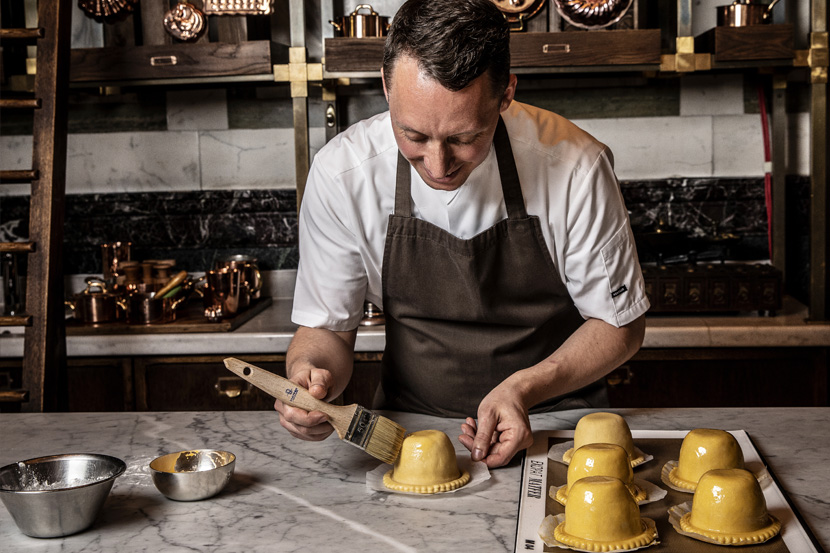
About PIES, you’ve made a name for yourself with the famous ‘pâté en croûte’, an emblematic specialty of the French gourmet repertoire. When did you declare your love for this product?
The building housing the Rosewood London in High Holborn is over a century old and I discovered a cache of antique pie molds in a basement store. I had never used this type of equipment before. I do not like having gaps in my knowledge of cooking, so I asked whether anybody in the kitchen had any experience of using these things and nobody had. So, if I had to fill that shortcoming, I had to do it myself. So, I did some research, I read books about it, and of course got inspired and nurtured by French expertise and know-how in this area.
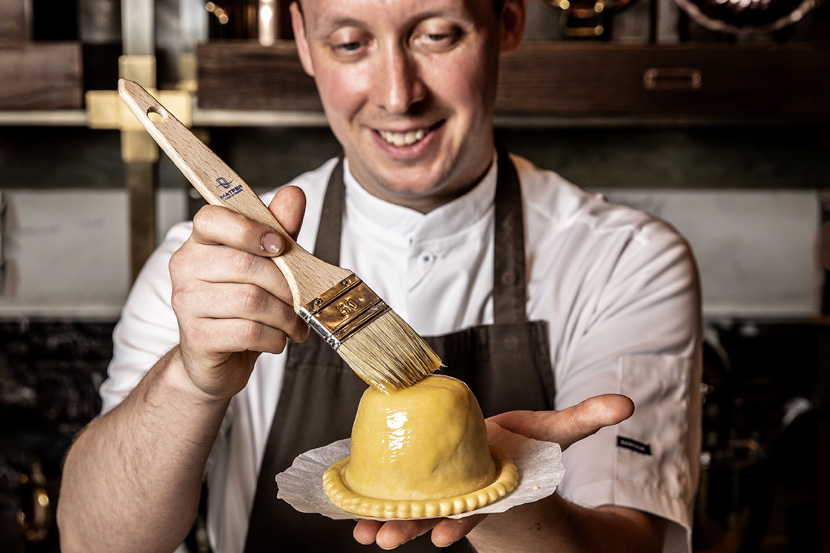
Since then, you’ve become a master at making pâté en croûte. Did it take you a long time to master this recipe?
About six months of training and testing to master this recipe, which is in fact all the time perfectible and source of perpetual inspiration.
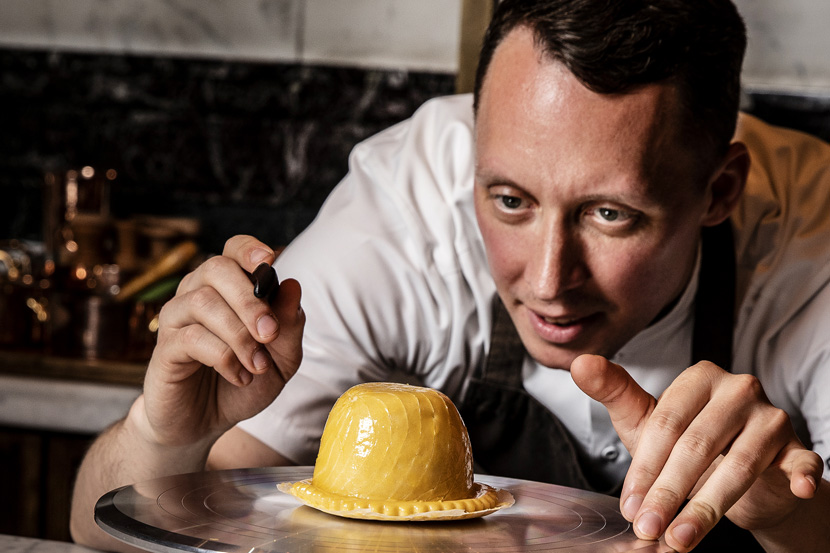
How do you explain the craze for this charcuterie pastry?
I cannot explain it but it is an addictive recipe, as fascinating for the person who makes it as for the person who consumes it, with its details, its diversified aestheticism and its technicality to make it. I became obsessive about it. Not surprisingly, the pâté en croute – pie is followed on social media, as the finished product is so visually appealing and attractive.
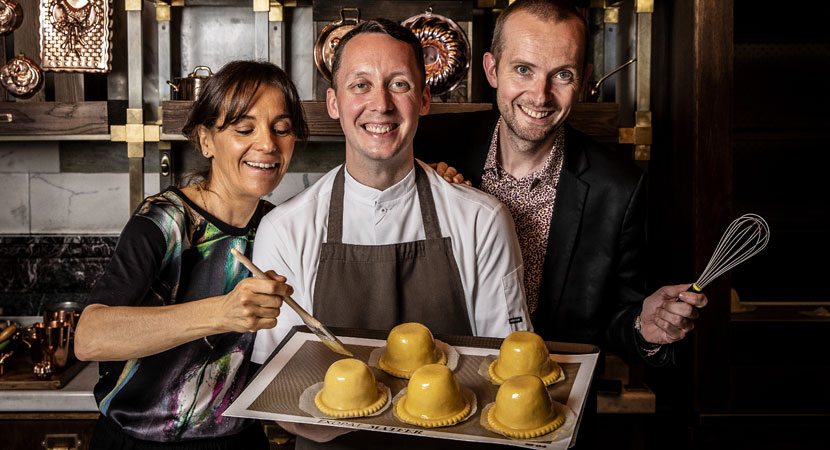
Pâté en croûte is a real technical feat. Where does the difficulty lie?
It requires a multitude of know-how for its manufacture in terms of forcemeat and cooking but also the pastry as the whole piece must be homogeneous, aesthetic and tasty. It requires great control of the dough that must be crisp and the cooking temperature.
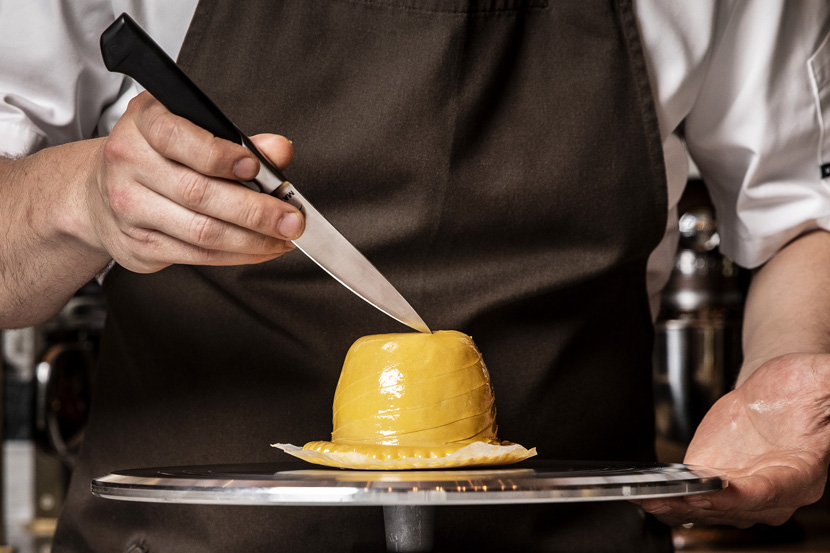
Do you give importance to the aesthetics of the pie?
Of course! Design plays a key role in the creative process because it allows a multitude of creative possibilities, decoration and shapes. However, this is no longer my goal. I’ve gone back to a simpler pie in its shape and put more emphasis on the taste and the filling. With the effort this dish requires, there’s no question of bungling the filling, as it requires good products; very good quality of meat, fish or other ingredients.
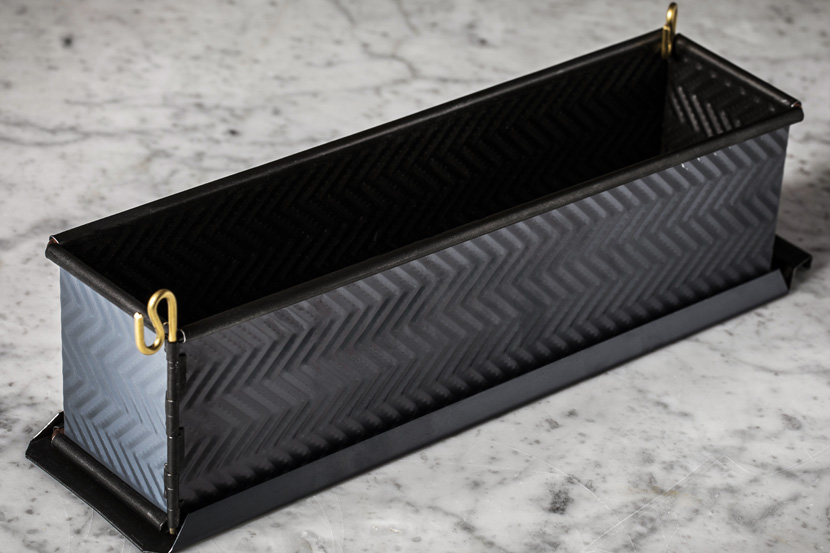
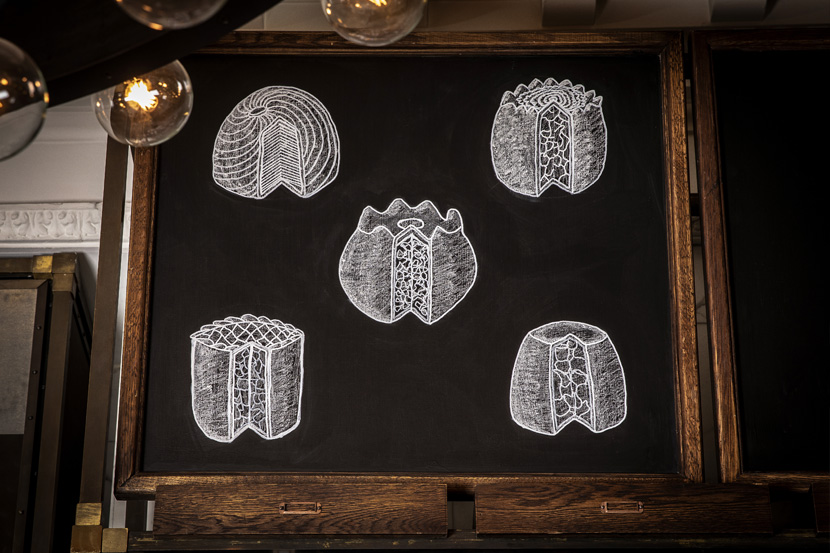
What dish are you most proud of?
I would say all my pies. They are like a little family that I have nurtured. It is an interesting product to work which opens a field of possibilities and each stage of its manufacture must be apprehended in a traditional way with meticulousness and love. Plus, I love pie and pâté en croûte molds. I spend long nights looking for antiques on the web. I already have a good collection. I love it and I work with Matfer Bourgeat custom molds. I found some in the cellar of our restaurant. I especially like their non-stick exopan molds. They are ideal for cooking because the exopan combines the quality of tinplate cooking which I attach so much importance to along with them being non-stick.
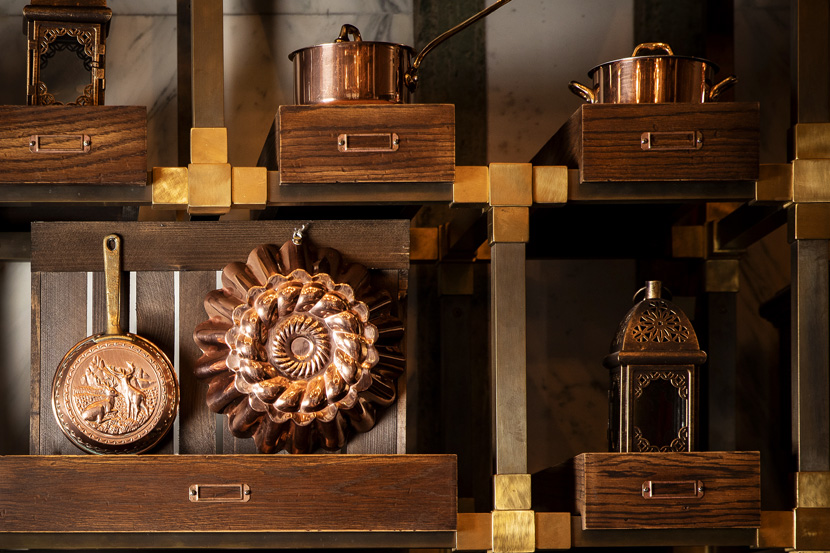
Regarding Matfer Bourgeat, do you have a favorite utensil?
I love Rolling Pins, embossed rolls with patterns, and pic vite roller dockers that dock the strips of dough. These are a must that I cannot do without.
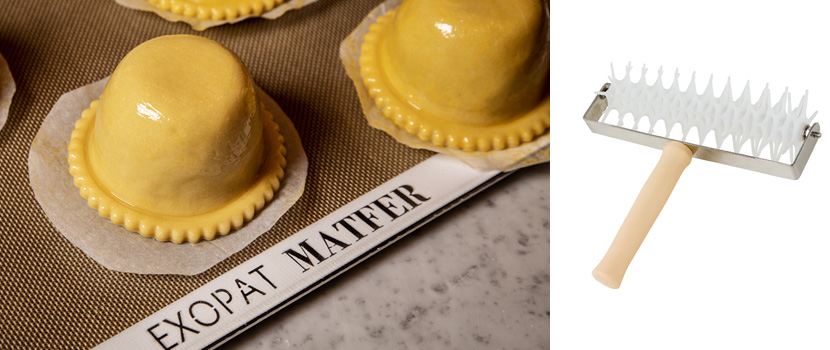
Finally, personally, what is your favorite dish?
I love osso-bucco. For me, it’s the perfect dish. I ate one recently in Milan with a saffron risotto and I really enjoyed it!
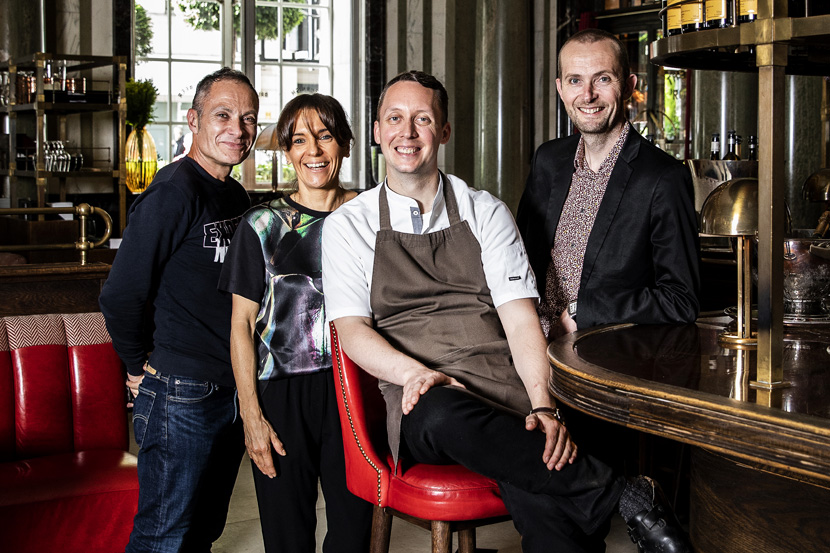
The return to grace of a dish of disgrace
This emblematic specialty of the French gourmet repertoire and meticulous to prepare, has never really left the tables but it has been overused, abused and often disliked. With the help of a world championship and rehabilitation by several chefs, the pâté en croûte, is fast becoming a chic and courted dish. Today, it sustains the tastes of bistronomy, in savory and sweet versions, sits on starred tables and – time oblige – even posted on social networks due to its particularity and aesthetics. Rosettes, shapes and symbols are created not only in the forcemeat but also on the outside of the dough. At the time, it was called “pâté” or “pâté en pâte”; a type of terrine yet it’s nothing like a terrine. Then in the middle of the 19th century, “crust” was added to avoid confusing the terms. The Lyonnais renamed it in their style the pâté-croûte. Originally, the envelope, or wrapping was not eaten: its role served to preserve the forcemeat and was especially destined to maintain things in place. Although it has never really disappeared from tables, it had to be brought up to date, refined, like the stuffing. As proof, the pâté en croûte has regained its place by appearing on menus of the greatest tables (Alain Ducasse even cooked one on the occasion of Donald Trump’s visit to France). A true renaissance that is also found made by contemporary caterers, even on the other side of the Channel…
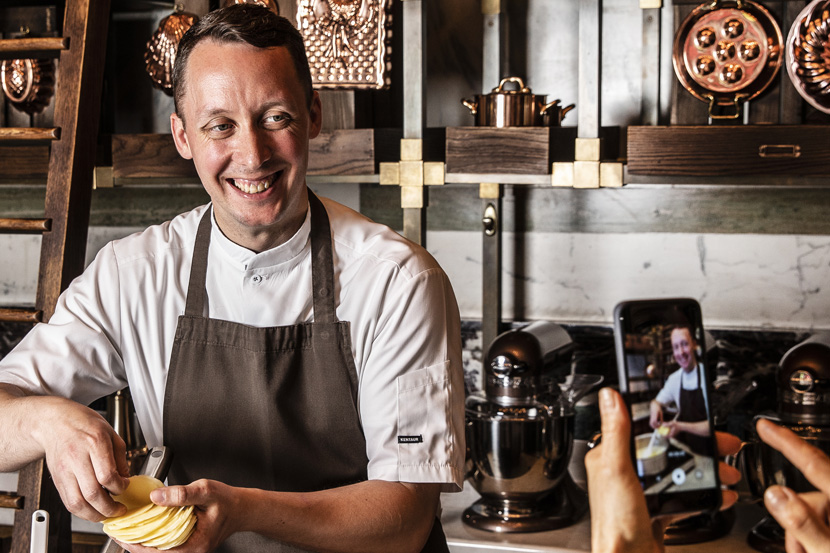
Biography
Aged 35, Calum Franklin began his career at the Michelin starred restaurant Chapter One in Kent. It was there that he developed his culinary skills before working in many famous restaurants: The Ivy, Aurora at the Andaz Hotel, Indigo at the One Aldwych Hotel or Roast in London’s iconic Borough Market before masterfully taking the helm at the Holborn Dining Room at Holborn, one of London’s most historic neighborhoods, midway between the City and the West End. His cuisine has imposed itself as a must in the British capital.
